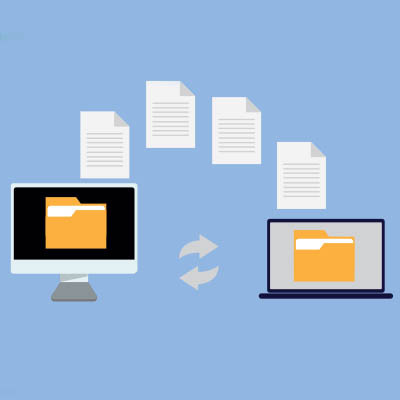Many people still underestimate the importance of cybersecurity and data privacy, putting themselves and others at risk. Most individuals are accustomed to sharing personal information online, whether through social media, e-commerce platforms, or various digital services. However, this lack of caution can lead to serious security breaches, identity theft, and even financial fraud. When people fail to take basic security measures, such as using strong passwords or enabling two-factor authentication, they create vulnerabilities that malicious actors can exploit. These weaknesses don’t just impact them personally but also expose organizations and communities to cyberattacks.
Phantom Technology Solutions Blog
File sharing is a significant part of communication today. Whether trying to send a meme to your friends or sharing a video that won’t send, it can be frustrating when sharing your file doesn’t work. In the business world, though, ineffective file sharing can be more than just an inconvenience—it can lead to costly miscommunication. Let’s explore two methods seen in small business file sharing and how they benefit your organization.
Collaboration is essential for modern business functionality, which often means that your team members will need to share files of all sizes. The trouble is that larger files have historically been a pain to share.
Fortunately, thanks to technology, there are now simple ways to share larger files with your team members. Let’s review them together.
Handling time calculations in a spreadsheet can often feel frustrating—especially when you’re just trying to add them up. Luckily, both Microsoft Excel and Google Sheets have built-in functions specifically designed for this purpose, making the process more manageable.
Here’s a quick guide to help you get started, no matter which spreadsheet program you use.
We all share a lot of data. There’s everything shared for professional purposes, of course, but there’s also all the casual things that we send back and forth—chats, requests to have people to pick up things on the way home, and (naturally) memes and pet pictures.
Most of this is sent off without a thought. However, let’s take a moment to think about it for a moment… is there an impact to all this data being sent around?
Email is a centralizing communication tool for most businesses, but what would you do if we asked if your email system was encrypted? Could you give us an honest answer? Encryption is a powerful security measure for networks and infrastructure, so it makes sense to use it for your email solution, too. Here’s what you need to know about encryption and email.
If your organization has an internal IT department, chances are they're managing a complex infrastructure while being understaffed and overworked. This isn't a criticism; it's simply the reality for many SMBs (we understand this well). We can ease the burden on your IT team and streamline your technology management.
Regarding business logistics, inventory management is a significant contributing factor you cannot avoid. It keeps your operations running well, regardless of what type of business you run. Your company will always need its inventory, and managing it effectively and efficiently can save on costs, improve service levels, and promote overall business success.
Cyberattacks often attack healthcare organizations, including businesses and vendors they associate with, primarily due to how lucrative they can be. One particularly nasty hack is just one of the many organizations which have been featured in headlines due to their inability to protect against security threats. Let’s explore this new situation with UnitedHealth Group and see if there is anything you can learn from it.
Your business is as valuable as the data it collects, meaning that if you’re not taking full advantage of your data, you’re leaving money on the table. SMBs need all of the strategic advantages they can get, and one way you can gain such an advantage on your competition is through utilizing big data. Let’s explore how big data can transform your operations for the better.
Humans have all kinds of stakes in digital security thanks to today’s online world demanding that we be more online than ever. Whether it’s personal information or financial details, you can bet everyone is at risk to some degree. Today, we want to examine why individuals—even technology professionals—are not immune to data theft.
A single oversight can potentially nullify the effectiveness of your cybersecurity measures. For instance, even if you've implemented security measures like multifactor authentication, a phishing scam or certain malware variants could grant unauthorized access to your email, compromising all the data stored in your inbox.
The significance of databases for the average business is extremely important. They are an indispensable tool for seamless operations. Without an efficient database management system (DBMS), your business will not operate optimally. This month, we aim to describe the intricacies of DBMS and its pivotal role in enhancing your business.
The cloud gives businesses more opportunities than ever to change operations for the better, but a poorly configured cloud could create more problems than it solves—including the potential for a security breach! Here are some of the most important reasons why you must configure your cloud solutions properly.
Keeping your data safe is extremely important. More precedence has been put on data privacy and security in recent times as phishing and ransomware litter the landscape. Unauthorized access to data can lead to severe consequences. The methods employed by cybercriminals today are more sophisticated than ever; and it quite often allows them to breach organizational data security. Today, we thought we would take a look at a few strategies people are using to protect their data.




















